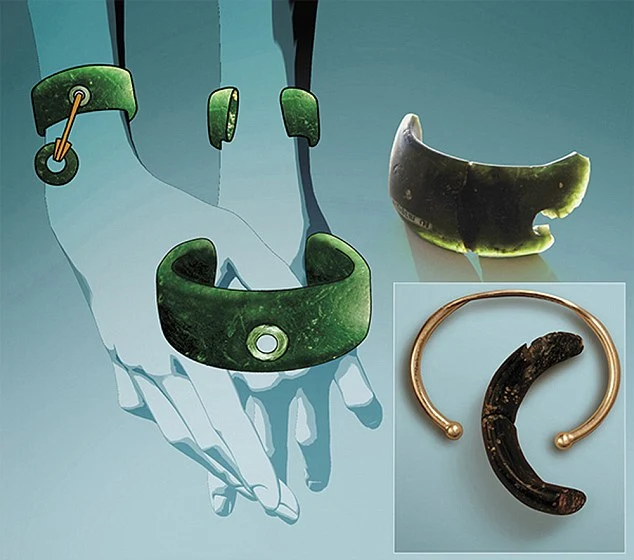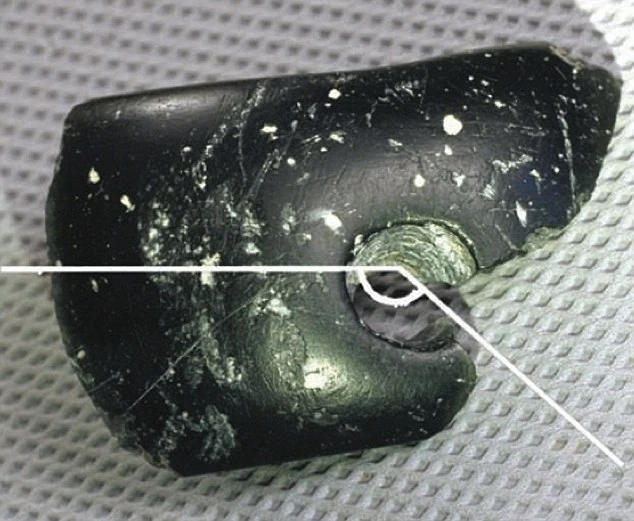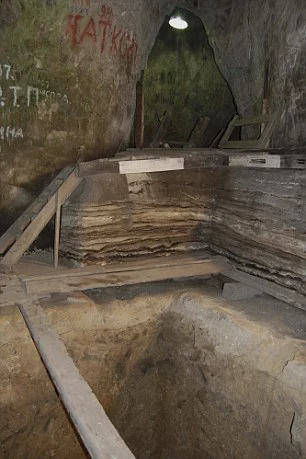A 40,000-year-old Bracelet Discovered in Siberia May Have Been Crafted by an Extinct Human Species
A unique green stone bracelet discovered beside ancient human remains in a Siberian cave is ‘the oldest ever found’ dating back around 40,000 years, say Russian experts.

The intricate modern-looking piece of polished jewellery – perhaps belonging to a prehistoric princess – was made of chlorite by the Denisovans, a long extinct early human grouping, it is believed.
The remarkable bracelet was found in the Altai Mountain range in 2008, but it is only now that pictures have emerged showing it in all its glory, including a reconstruction of how it would have looked at the time.
Experts who have spent years examining the bracelet say evidence suggests it was an exceptionally rare item of the era and likely held great significance for the wearer, reported The Siberian Times.
In addition, the level of skill and expertise required to create the piece has led to speculation that these earliest humans were more technologically advanced than previously thought, with the Denisovans seemingly more skilled than Homo sapiens or Neanderthals.


Scientists found that a hole had been drilled in part of the bracelet with such precision that it could only have been done with a high-rotation drill similar to those used today.
It was also carefully polished, with a heavy pendant added in the centre, probably hanging from a short leather strap.
Yet the archaeologists have ruled out that the bracelet was made in a later era and buried with the earlier, Denisovan remains.
Scientists also noted it was made of chlorite, a stone found more than 150 miles away, suggesting the bracelet was of significance at the time.
This unique jewellery is currently held at the Museum of History and Culture of the Peoples’ of Siberia and the Far East in the city of Novosibirsk.
Head of the museum Irina Salnikova said: ‘The skills of its creator were perfect. Initially we thought that it was made by Neanderthals or modern humans, but it turned out that the master was Denisovan.
‘All jewellery had a magical meaning for ancient people. Bracelets and neck adornments were to protect people from evil spirits, for instance.
‘But this item, given the complicated technology and “imported” material, obviously belonged to some high ranking person of that society.’
Anatoly Derevyanko, Director of the Institute of Archaeology and Ethnography, of the Siberian Branch of the Russian Academy of Science, said: ‘The bracelet is stunning.


‘In bright sunlight it reflects the sun rays, at night by the fire it casts a deep shade of green.
‘It is unlikely it was used as an everyday jewellery piece. I believe this beautiful and very fragile bracelet was worn only for some exceptional moments.’
The bracelet was discovered inside the famous Denisova Cave, which is renowned for its archaeological finds including the bones of a woolly mammoth and woolly rhino.
Soil surrounding it was dated using oxygen isotope analysis.
Located about 100 miles south of the city of Barnaul, it is popular with tourists because of the vast number of unusual animal remains that have been found there.
The bracelet was found in 2008 during an expedition into the cave, which has a year-round temperature of 0 degrees Celsius, helping to preserve remains.
Nearby was the finger bone of a seven- or eight-year-old Denisovan girl who lived about 40,000 years ago, a find which changed scientific understanding of early man.
Two fragments of the bracelet were found, about three-centimetres wide and one-centimetre thick, and it was established that it had been worn on the right hand, probably by a woman or child.
But what puzzled experts was the way the jewellery had been made and it remains far from clear clear how the primitive human species could have created it.
Dr Derevyanko said: ‘There is a drilled hole with a diameter of about 0.8 cm.
‘Studying it scientists found out that the speed of rotation of the drill was rather high with minimal fluctuation, and there was applied easel drilling – technology that is common for more recent times.
‘The ancient master was skilled in techniques previously considered not characteristic for the Palaeolithic era.’

The institute’s deputy director Mikhail Shunkov said the bracelet was found ‘in the same layer’ inside the cave with proven remains of Denisovans.
He said that ‘nowhere in the world’ had such technology been used at such an early time.
This showed Denisovans were ‘more progressive’ than Homo sapiens and Neanderthals, he said, even though ‘according to their genetic and morphological characters’, they were far more primitive.
The Denisovans are thought to date back as early as 600,000 years ago, and were neither Neanderthals nor modern humans.
DNA discovered in Spain suggests the species – which was more common in Russia and the east — at some point resided in Western Europe, where Neanderthals had been thought to be the only early inhabitants.
WHO WERE THE DENISOVANS?
- Also known as the Denisova hominins, the Denisovans are an extinct species of human in the genus Homo.
- The finger bone fragment of the young girl – discovered in 2010 in the Denisova Cave – was the first indication of their existence.
- Two teeth belonging to different members of the same population have since been reported.
- Very little is known of the species’ physical characteristics, as the only physical remains discovered so far are the finger bone, the two teeth and a toe bone.
- But the finger bone is unusually broad and robust, indicating that the Denisovans were physically similar to Neanderthals.
- The Denisova Cave is named after Denis, a Russian hermit who lived there in the 18th century




